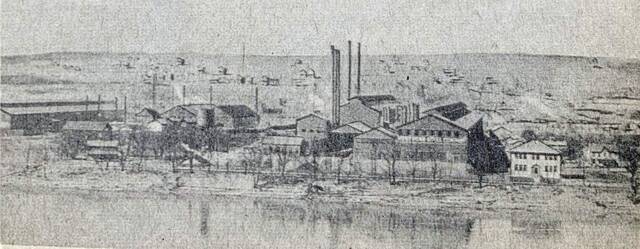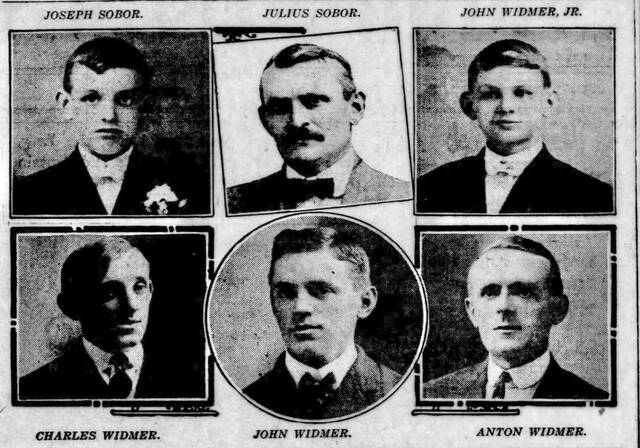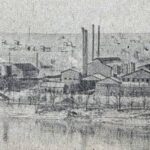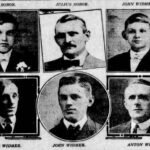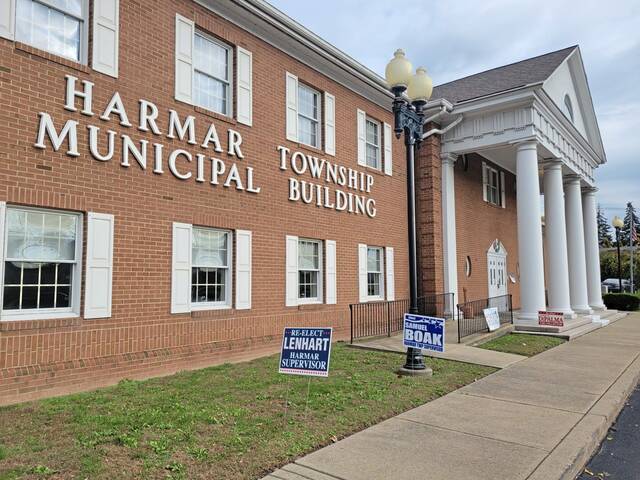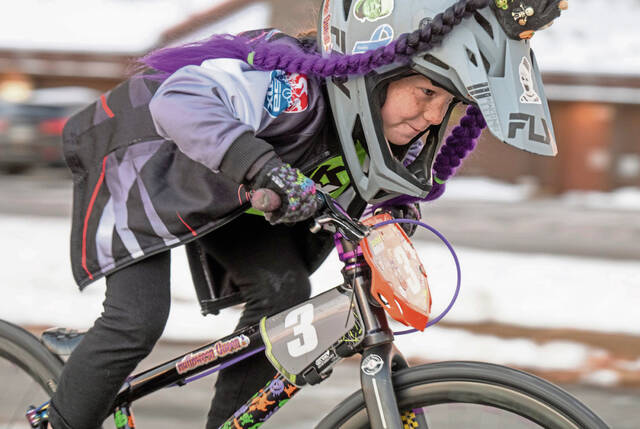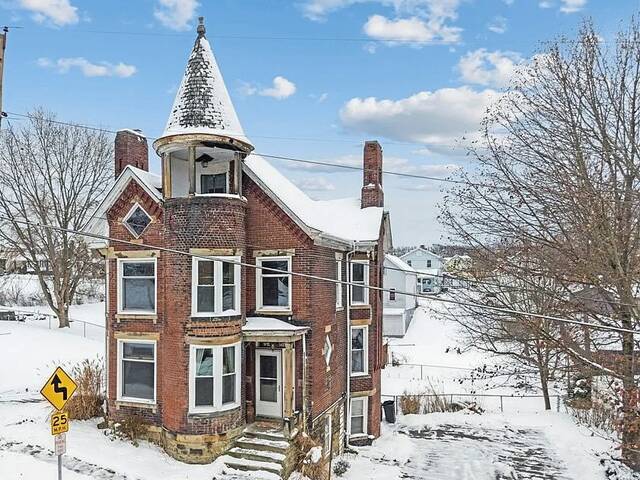One of the major problems facing the early settlers of the Alle-Kiski Valley was crossing the rivers.
Before 1900, for the residents of communities near Tarentum, the closest bridge crossing was Garvers Ferry Bridge, which was built in 1886 near Freeport. The problem was alleviated, somewhat, in 1900 with the opening of Bouquet Bridge in New Kensington.
Before the 1900s and well into the first part of that century, many people used ferries along the river. For most travelers and merchants, it was much quicker than traveling several miles to a bridge crossing.
One of the greatest tragedies to occur during a ferry crossing on the Allegheny River took place on Sunday, Oct. 12, 1913.
Six members of a family perished while crossing the Allegheny between Brackenridge and Edgecliff. Edgecliff, one of Lower Burrell’s oldest communities, was on the flatlands where Chartiers Run empties into the Allegheny River.
The Widmer family had gathered for a midday meal in Brackenridge, and the men and boys decided to spend the afternoon groundhog hunting at the farm of Frank Widmer near Edgecliff.
They had been planning the trip for a week and even borrowed a hunting dog named “Tag” from a neighbor. The temperature was cool that day, in the 60s, and they had dressed accordingly.
A little after 2 p.m., they boarded a 16-foot rowboat near West Penn Steel Co. in Brackenridge. The boat belonged to ferry operator August Montable and was piloted by his 17-year-old son, August Jr.
George Oblinger, who survived the crossing, gave an account of the events that followed.
The river was calm when they left the shore at Brackenridge, but they experienced a sudden heavy wind and encountered white-capped waves as they reached the middle of the river. The closer they got to the Edgecliff shore, the rougher the river became. Oblinger said a large wave suddenly swept over the rear of the boat, half filling it.
One of the passengers became excited and jumped to his feet. Several others followed suit. This caused the boat to become unstable, and the rear of the boat began to take on water. The boat began to sink, slowly at first and then quite rapidly.
Anton Widmer called out to the youngsters on board: “Now boys, if the boat sinks, sit in her until she goes down and when she goes over cling to the sides.”
The next wave sank the boat, leaving the occupants clinging to one side. Oblinger grabbed an oar for buoyancy. He said the other adults were known to be strong swimmers and he was the least qualified swimmer of the group.
When he reached the shore at Edgecliff, he looked back and saw Montable perched on the bottom of the overturned boat. He believed the men had drowned trying to save the boys who could not swim.
Oblinger said Charles Widmer had brought along a mattock head, a tool that could be used for digging. He believed the weight of the tool, which Widmer was carrying in his coat pocket, may have contributed to his drowning. It also is believed that the heavier clothes the men were wearing became waterlogged and played a role in the drownings.
August Montable Jr., the only other survivor, said the boat turned over twice and that he was in it each time it flipped. Each time, he said, he crawled out from under the boat and climbed onto the bottom of the capsized vessel as soon as it became stable. From his vantage point, all he could see were hats floating on the river’s surface.
Newspapers describing the events of the day, calling it was the worst disaster in the history of Brackenridge.
Of the eight passengers on board, only two survived.
The dead
• John Widmer, 42, of Brackenridge. He was employed by Tarentum Glass Co. He left behind a widow and five daughters.
• John Widmer Jr., 14, son of John Widmer.
• Anton Widmer, 37, of Brackenridge He also was employed by Tarentum Glass Co. He left behind a widow and a daughter.
• Charles Widmer, 28. He worked for Allegheny Steel Co. He left behind a widow and child.
• Julius Sobor, 48, of Brackenridge. He also worked at Allegheny Steel Co. He was related to the Widmer family through marriage and left behind a widow, four sons and five daughters.
• Joseph Sobor, 15, son of Julius Sobor.
The survivors
• George Oblinger of Brackenridge, a close friend of the Widmer family.
• August Montable Jr., 17, the ferry owner’s son who was rowing the boat.
Mother stricken by grief
The river was dragged, and the bodies were taken to a vacant storeroom near the Edgecliff Post Office, which was used as a temporary morgue. They were laid side by side and covered with papers to shield them from public view.
Later, the bodies were transported to the Flick morgue in Tarentum where they were prepared for burial. They then were taken to their respective homes for viewing.
Mrs. Magdalene Widmer, 79, of Brackenridge, the mother of three of the men who perished, reportedly was crazed with grief and had to be prevented by neighbors from visiting the site of the crossing.
Thousands watched recovery effort
The news of the accident spread quickly and large crowds formed along both sides of the river. On the Brackenridge side, there was a mile of cars parked along River Road. It was estimated as many as 5,000 people watched the recovery efforts.
An newspaper account in The Pittsburgh Post the following day stated: “Last night there were four widows and 16 orphans in Brackenridge as a result. While a gray-haired mother had lost three sons, a son-in-law and two grandchildren.”
Later on the day of the accident, rides were given to people to view the point in the river where the drownings occurred. August Montable recovered the boat that had sunk and used it for tours of the accident site later that same afternoon.
The funerals
Hundreds were in attendance for the victims’ funeral service the following Wednesday at St. Joseph Catholic Church. Several pews were removed from the church to accommodate the six caskets laid side by side. Following the funeral Mass, people lined the roadways in a sign of respect between the church and St. Joseph’s Cemetery in Birdville, where the bodies were interred.
On the day of the funeral, the Valley Daily News ran a column with the headline “Recent fatalities on river indicate need of bridge.” The newspaper reported that nine people had lost their lives in nine months in the Allegheny River within a few hundred yards of the accident site at Edgecliff.
There had been an almost identical accident involving an overturned skiff, taking the lives of two men, near the same location July 12.
The aftermath
Within a month of the accident, funds were allocated for the building of a bridge joining Braeburn and Natrona. By September 1915, the U.S. Secretary of War approved the plans for the new bridge.
The construction estimate for the bridge was $225,000 with the cost to be covered equally by Allegheny and Westmoreland counties. Allegheny County commissioners ratified the agreement, but the Westmoreland County commissioners never responded.
Oblinger lived to the age of 91. He often related how fortunate he had been because he was the only adult on the boat who did not know how to swim.


